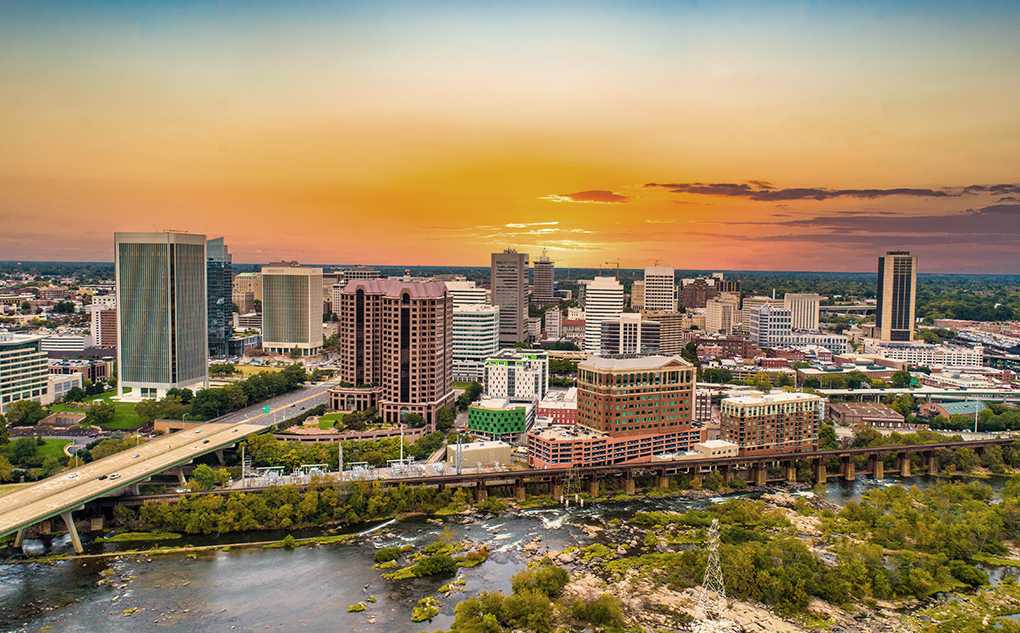Virginia Beach Outperforms Most Large Apartment Markets

Apartment market performance in Virginia Beach-Norfolk-Newport News ranks among the top in the nation, caused by a period of manageable apartment supply volumes.
Virginia Beach, also known as Hampton Roads and Coastal Virginia, is the 42nd-most populated apartment market in the U.S. with a population of nearly 1.8 million residents and a workforce of roughly 830,000. Virginia Beach is located on the southeastern coast of Virginia along the Atlantic Ocean at the mouth of Chesapeake Bay and borders the Richmond market to the west. In addition to southeast Virginia, the market also covers a small portion of northeastern North Carolina and the Tidewater Region.
Deliveries in Virginia Beach have remained moderate recently, as a total of 2,328 units came online during the year-ending 2nd quarter 2024, growing inventory a modest 1.5%, according to data from RealPage Market Analytics. Those additions took the market’s existing stock to nearly 146,000 units. While Virginia Beach has the seventh smallest unit count among the nation’s 50 largest markets, the past year’s inventory growth was the 15th smallest expansion rate and registered well below the U.S. average of 2.7%. During the past year, Portsmouth/Suffolk and Southern Norfolk received more than half of Virginia Beach’s new supply.
Demand in the Virginia Beach-Norfolk-Newport News apartment market has been rebounding since mid-2023. In the year-ending 2nd quarter 2024, the market absorbed 1,636 units – a bit behind historical performance but a significant improvement from the more than 2,100 annual net move-outs recorded a year earlier.
Five of Virginia Beach’s nine submarkets posted positive annual absorption in 2nd quarter, led by Portsmouth/Suffolk with nearly 600 units. Southern Norfolk, Virginia Beach West and Williamsburg/Jamestown also saw positive annual demand, each absorbing roughly 300 to 500 units. Newport News was the market laggard with net move-outs from about 120 units.
Except for a brief downturn in early 2023, occupancy in Virginia Beach has registered at roughly 95% or higher for the past six years, averaging 96.4% during that period. While occupancy has fallen from pandemic-level peaks seen in 2021, the market remains essentially full. As of August, Virginia Beach occupancy clocked in at 95.3%, the eighth-tightest rate among the nation’s 50 largest markets and 120 basis points above the national average.

Occupancy in August was tight across product classes, with Class B product leading at 95.5%. Class A stock closely followed at 95.4%, while the more affordable Class C units trailed at 94.8%. Submarket-level occupancy ranged from a low of 94.3% in Newport News to a high of 96.7% in Chesapeake.
Due to tighter-than-average occupancy, Virginia Beach apartment operators didn’t resort to rent cuts during the pandemic, unlike some other big markets. In fact, Virginia Beach has not recorded rent cuts on an annual basis in nearly 10 years. Although Virginia Beach’s 3% increase in effective asking rents during the year-ending August 2024 was well below the double-digit hikes seen in 2021, it was the seventh-highest performance among large markets. In addition, recent rent growth was above the market’s annual average of 1.8% seen during the five years leading up the pandemic (2015-2019) and came in well above the U.S. norm of 0.4%.
Class A and C units in Virginia Beach achieved the strongest annual rent increases in August, both at 3.4%. Meanwhile, Class B product underperformed the market average with growth of 2.4%. Similar to occupancy, Chesapeake claimed the market’s strongest rent growth rate among submarkets (5.4%), though every neighborhood saw at least some level of growth on an annual basis. The smallest increases were in Virginia Beach West (1.8%) and Williamsburg/Jamestown (1.9%)
Strength in the Hampton Roads apartment market is partly attributed to the stability of the local economy. Unemployment in Virginia Beach has been comparatively low. In July, the unemployment rate in Hampton Roads registered at 3.5%, tying with Washington, DC for the fifth-lowest rate among the 50 largest U.S. markets.
Hampton Roads’ economic base is insulated by a large military presence and positions in government and the defense industry. Nine major military installations representing all branches of the U.S. Armed Forces are located in the region with a total of 96,835 active-duty military personnel. A such, the area is home to a host to defense-related companies, with the defense industry having a direct economic impact of roughly $26 billion a year for the local economy.
Even though miliary personnel are not counted in labor force statistics, Government is the largest employment sector in Virginia Beach, representing over 19% of all private sector jobs, well above the national norm of less than 15%. Trade/Transportation/Utilities is the second-largest employment sector in Hampton Roads but comprises a smaller proportion of jobs than the U.S. overall, 15.8% and 18.2%, respectively. Tourism also plays an active role in the local economy. Leisure/Hospitality Services employment (12.1%) in Virginia Beach is slightly larger than the U.S. average (11.1%). In addition, the Port of Virginia is a major economic asset, directly and indirectly supporting more than 565,000 jobs and generating over $124 billion in economic output each year.
Also supporting the local apartment market, Virginia Beach has a relatively young population. Young adults made up 22.5% of Virginia Beach-Norfolk-Newport News' total population in 2022, according to the latest data from the U.S. Census Bureau. The young adult population in Virginia Beach was larger than the national norm of 20.4%. As such, the median age in Virginia Beach-Norfolk-Newport News during 2022 was 37.1, compared to the U.S. norm of 38.5.










